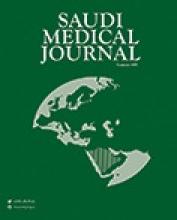Abstract
OBJECTIVE: To investigate whether changing concentration and volume of ketamine for rectal premedication would change the premedication and recovery characteristics.
METHODS: A prospective, randomized, clinical study was designed in Yeditepe University Hospital, Istanbul, Turkey in 2006-2007. The study group included children weighing 10-20 kg, American Society of Anesthesiologists grade I, scheduled for inguinal hernia repair or circumcision under general anesthesia with orotracheal intubation and caudal blockade. Children were rectally premedicated with 10 mg.kg-1 ketamine 5% in group K, and 2.5% in the Group K1/2, 45 minutes before anesthesia. Anesthesia was induced and maintained by inhalation. Sedation scores at 15 minutes intervals in the preinduction area, parental separation scores, induction and recovery characteristics, time to discharge and a questionnaire at 24th postoperative hour were recorded.
RESULTS: One hundred children were randomized into 2 groups of 50. Thirty minutes 1.2 versus 0.48, p=0.018 and 45 minutes 2.24 versus 1.8, p=0.027 following premedication group K1/2 had significantly lower mean sedation scores than group K. Separation, induction quality scores, induction duration, secretion scores either during induction or postoperative period, and recovery characteristics were all comparable in both groups.
CONCLUSION: Although adequate sedation was obtained for most of the children in both groups, rectal premedication with 5% ketamine resulted in higher levels of sedation appearing earlier than that of 2.5% ketamine, while change of volume and concentration had no effect on recovery characteristics.
- Copyright: © Saudi Medical Journal
This is an open-access article distributed under the terms of the Creative Commons Attribution-Noncommercial-Share Alike 3.0 Unported, which permits unrestricted use, distribution, and reproduction in any medium, provided the original work is properly cited.






